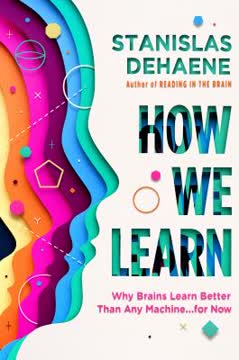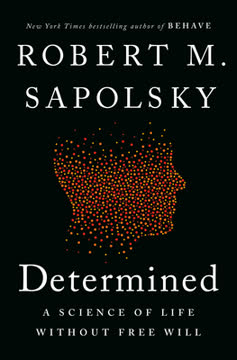Key Takeaways
1. Violence has evolutionary roots and can be an adaptive strategy
Even as early hominids developed the ability to reason, communicate, and cooperate, brute violence remained a successful "cheating" strategy.
Evolutionary perspective: Violence and antisocial behavior can be understood as strategies that evolved to maximize reproductive success and resource acquisition. This explains phenomena such as higher rates of violence among males, infanticide, and spousal abuse.
Adaptive benefits: In certain contexts, violence can provide advantages:
- Acquiring resources from others
- Establishing dominance and status
- Deterring aggression from rivals
- Attracting mates through displays of strength
Cultural variations: Different societies may promote or inhibit violent tendencies based on their ecological niches. For example, cooperative societies like the !Kung Bushmen vs. more competitive societies like the Mundurucú.
2. Genetics play a significant role in antisocial and violent behavior
Twin studies tell us that aggression and violence are heritable.
Heritability estimates:
- 40-50% of variability in antisocial behavior is explained by genetics
- Up to 65% heritability for aggressive behavior
Key genes identified:
- MAOA gene (dubbed the "warrior gene")
- Serotonin transporter gene (5HTT)
- Dopamine-related genes (DRD2, DAT1, DRD4)
Gene-environment interactions: Genetic predispositions often interact with environmental factors. For example, individuals with the low-activity MAOA gene are more likely to develop antisocial behavior if they experience childhood maltreatment.
3. Brain structure and function are altered in violent offenders
We found that both the right and left amygdalae are impaired in psychopaths—although the deficits are greatest on the right. Overall, there was an 18 percent reduction in the volume of the amygdala in psychopaths.
Key brain regions affected:
- Prefrontal cortex: Reduced volume and function, especially in ventromedial and orbitofrontal areas
- Amygdala: Reduced volume and reactivity to emotional stimuli
- Hippocampus: Structural abnormalities and dysfunction
Functional implications:
- Impaired emotion regulation and impulse control
- Reduced empathy and moral decision-making
- Difficulties in learning from punishment and modifying behavior
Neuroimaging evidence: Multiple studies using techniques like MRI, fMRI, and PET scans have consistently shown structural and functional brain differences in violent offenders compared to non-offenders.
4. Autonomic nervous system dysfunction is linked to criminal behavior
Low resting heart rate is a well-replicated correlate of antisocial and violent behavior.
Key autonomic markers:
- Low resting heart rate
- Reduced skin conductance responses
- Poor fear conditioning
Theoretical explanations:
- Fearlessness theory: Low arousal reflects a lack of fear, enabling risk-taking and aggressive behavior
- Stimulation-seeking theory: Under-aroused individuals seek stimulation through antisocial acts to raise arousal to optimal levels
Practical implications:
- Autonomic measures could potentially be used as biomarkers for early identification of at-risk individuals
- Interventions targeting autonomic functioning might help reduce antisocial tendencies
5. Early brain development issues can predispose individuals to violence
We are left with the possibility that this structural impairment has a subtle early origin. For whatever reason—be it environmental or genetic—the brain is not developing normally throughout infancy, childhood, and adolescence.
Critical developmental periods:
- Prenatal: Exposure to toxins, maternal stress, or nutritional deficiencies can impact fetal brain development
- Early childhood: Abuse, neglect, or lack of stimulation can alter brain structure and function
Neurodevelopmental markers:
- Minor physical anomalies
- Cavum septum pellucidum
- Neuromotor delays
Long-term consequences: Early brain development issues can lead to:
- Cognitive deficits
- Emotion regulation difficulties
- Impaired social skills
- Increased risk for psychiatric disorders
6. Nutrition, environmental toxins, and mental health impact violent tendencies
Poor nutrition sinks school performance and neurocognitive functioning.
Nutritional factors:
- Iron deficiency
- Zinc deficiency
- Omega-3 fatty acid deficiency
- Malnutrition during pregnancy and early childhood
Environmental toxins:
- Lead exposure
- Manganese exposure
- Cadmium exposure
Mental health considerations:
- Schizophrenia and related disorders increase risk of violent behavior
- Substance abuse often co-occurs with and exacerbates violent tendencies
Intervention opportunities: Addressing these factors through public health initiatives, environmental regulations, and improved mental health care could potentially reduce rates of violence in society.
7. Biological and social factors interact to shape violent behavior
We clearly see here the potency of adding early neurological risk into the equation. These babies were brought into life without sin, and yet they were ushered into the vestibule of violence before they could even sit up on their own.
Biosocial interactions:
- Birth complications + maternal rejection
- Minor physical anomalies + unstable home environment
- Genetic predisposition + child abuse
- Neurological deficits + poverty
Multiplicative effects: The presence of both biological and social risk factors often leads to exponentially higher rates of antisocial and violent behavior compared to either factor alone.
Implications for intervention:
- Multi-faceted approaches addressing both biological vulnerabilities and social risk factors are likely to be most effective
- Early identification and intervention may be crucial for preventing the development of violent behavior
- Personalized interventions tailored to an individual's specific risk profile could yield better outcomes
Last updated:
FAQ
What's The Anatomy of Violence about?
- Biological and genetic factors: The book explores how biological and genetic factors contribute to violent behavior, challenging traditional sociological views.
- Neurocriminology introduction: It introduces neurocriminology, a field combining neuroscience and criminology to understand antisocial behavior origins.
- Case studies and research: Adrian Raine uses case studies and research to illustrate the interaction between biological factors and social influences in shaping violence.
Why should I read The Anatomy of Violence?
- Unique perspective: Offers a fresh viewpoint on crime, emphasizing often-overlooked biological and genetic influences.
- Interdisciplinary approach: Combines insights from psychology, neuroscience, and sociology, appealing to readers interested in multiple fields.
- Practical implications: Discusses how understanding violence's biological roots can inform treatment, legal implications, and social policy.
What are the key takeaways of The Anatomy of Violence?
- Biological factors matter: Highlights the significant role of biological and genetic predispositions in violent behavior, alongside social factors.
- Neuroanatomy of violence: Identifies specific brain regions, like the prefrontal cortex and amygdala, implicated in aggression and antisocial behavior.
- Complex interplay: Advocates for a biosocial model, suggesting that both biological and environmental factors interact to influence violent behavior.
What are the best quotes from The Anatomy of Violence and what do they mean?
- “Biology is not destiny.”: Emphasizes that while biological factors influence behavior, they do not entirely determine it; environmental factors also play a crucial role.
- “The anatomy of violence encapsulates this exciting and vibrant new approach to the discipline of criminology.”: Reflects the book's aim to integrate biological perspectives into criminology.
- “The seeds of sin are rooted in our evolutionary past.”: Suggests that some violent behaviors may have evolutionary origins, linking our biological makeup to violence.
How does Adrian Raine define neurocriminology in The Anatomy of Violence?
- New discipline: Neurocriminology applies neuroscience principles to understand antisocial behavior origins.
- Interdisciplinary integration: Combines genetics, brain imaging, and psychology for a comprehensive crime understanding.
- Focus on prevention: Aims to improve prevention and treatment strategies for violent behavior by understanding its biological underpinnings.
What role do genetics play in violence according to The Anatomy of Violence?
- Genetic predisposition: Certain genetic factors can increase the likelihood of violent behavior, as seen in case studies of individuals with criminal backgrounds.
- Adoption and twin studies: Research shows children of criminal parents, even when adopted into noncriminal homes, are more likely to engage in criminal behavior.
- Specific genes identified: Highlights genes like MAOA, linked to aggression and impulsivity, suggesting a biological basis for some violent behaviors.
What are the implications of brain imaging studies discussed in The Anatomy of Violence?
- Functional differences: Violent offenders often have reduced activity in the prefrontal cortex, crucial for impulse control and decision-making.
- Emotional processing: The amygdala, involved in emotional responses, shows abnormal functioning in many violent individuals.
- Potential for treatment: Understanding these brain differences can inform therapeutic approaches and interventions for individuals at risk of violent behavior.
How does Adrian Raine connect violence to evolutionary biology in The Anatomy of Violence?
- Evolutionary perspective: Some violent behaviors may be rooted in our evolutionary past, where aggression could have conferred survival advantages.
- Selfish gene theory: Behaviors like aggression and violence can be seen as strategies to secure resources and reproductive success.
- Anthropological insights: Uses examples to illustrate how different ecological niches may have shaped violent behaviors in various cultures.
What is the significance of the prefrontal cortex in violent behavior as described in The Anatomy of Violence?
- Regulatory function: Crucial for regulating emotions and controlling impulses, its dysfunction is linked to increased aggression and violence.
- Neuroanatomical abnormalities: Many violent offenders show structural abnormalities in the prefrontal cortex.
- Implications for treatment: Understanding its role can help develop targeted interventions for individuals with violent tendencies.
How does The Anatomy of Violence address the relationship between heart rate and violence?
- Low heart rate correlation: Individuals with lower resting heart rates are more likely to engage in antisocial and violent behavior.
- Fearlessness theory: A low heart rate may indicate a lack of fear, predisposing individuals to take risks and engage in aggressive acts.
- Biomarker potential: Resting heart rate could serve as a biomarker for identifying individuals at risk for violent behavior.
What are the ethical considerations raised in The Anatomy of Violence?
- Neuroethical implications: Discusses ethical dilemmas surrounding biological explanations for violent behavior, including potential stigmatization.
- Responsibility and free will: Explores how understanding biological roots may challenge traditional notions of moral responsibility and free will.
- Policy and treatment: Emphasizes careful consideration of how biological research is applied in legal and social contexts.
What interventions does Raine suggest for preventing violence?
- Early Childhood Programs: Advocates for programs focusing on improving maternal health, nutrition, and parenting skills.
- Nutritional Supplements: Highlights potential benefits of omega-3 fatty acids and other nutritional interventions in reducing aggression.
- Mindfulness and Biofeedback: Discusses effectiveness in helping individuals regulate emotions and reduce impulsive behavior.
Review Summary
The Anatomy of Violence receives mixed reviews. Many praise its comprehensive coverage of neuroscience and violence, finding the research fascinating and well-presented. However, critics argue that Raine overstates his case, confuses correlation with causation, and makes problematic leaps in logic. Some find the writing style clunky and the final chapter particularly weak. Readers are divided on Raine's proposed solutions, with some finding them thought-provoking and others dystopian. Despite controversies, the book sparks important discussions about the biological roots of crime and potential implications for society.
Similar Books








Download PDF
Download EPUB
.epub digital book format is ideal for reading ebooks on phones, tablets, and e-readers.




